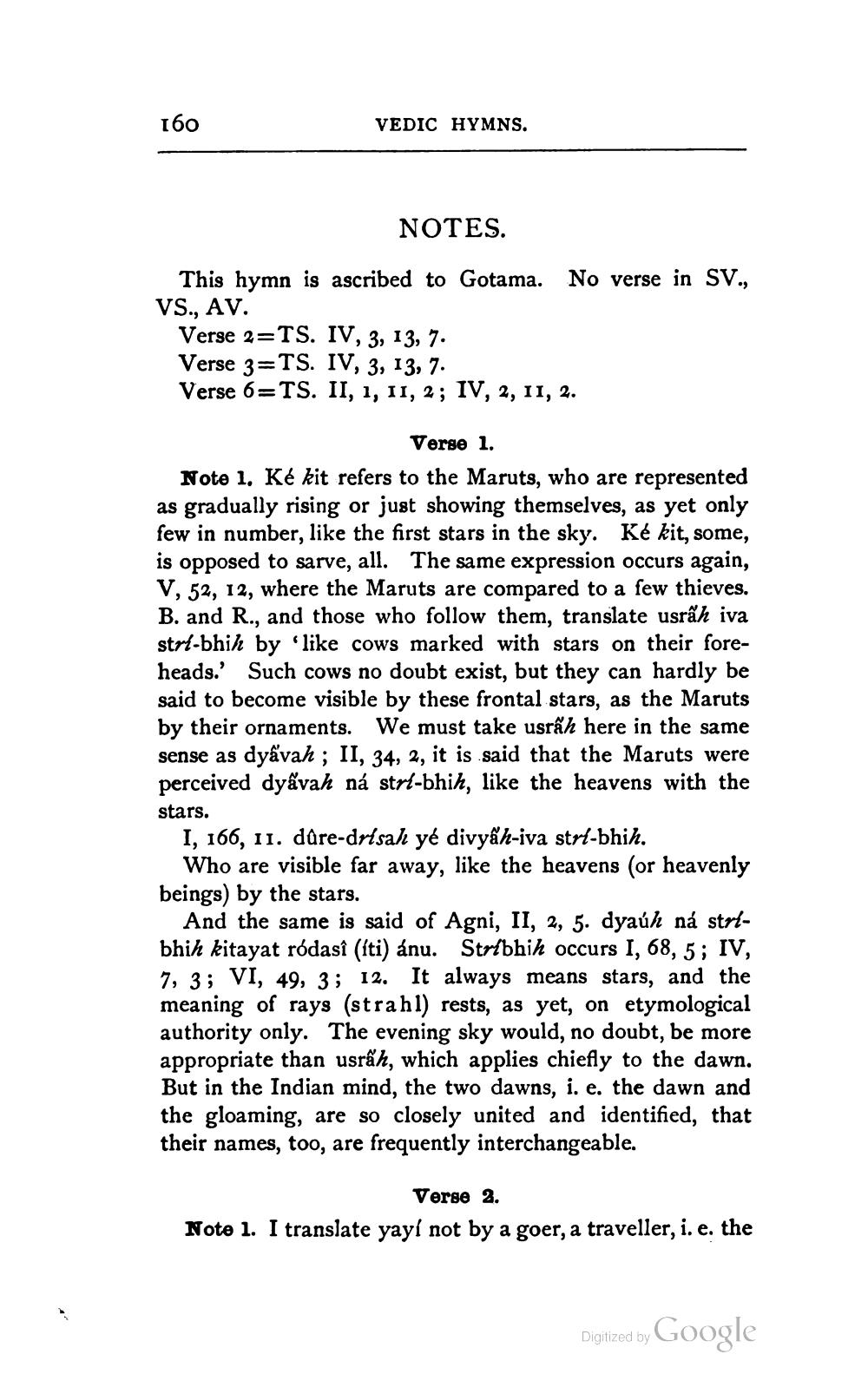________________
160
VEDIC HYMNS.
NOTES.
This hymn is ascribed to Gotama. No verse in SV., VS., AV.
Verse 2=TS. IV, 3, 13, 7. Verse 3=TS. IV, 3, 13, 7. Verse 6=TS. II, 1, 11, 2; IV, 2, 11, 2.
Verse 1. Note 1. Ké kit refers to the Maruts, who are represented as gradually rising or just showing themselves, as yet only few in number, like the first stars in the sky. Ké kit, some, is opposed to sarve, all. The same expression occurs again, V, 52, 12, where the Maruts are compared to a few thieves. B. and R., and those who follow them, translate usrấh iva stri-bhih by like cows marked with stars on their foreheads. Such cows no doubt exist, but they can hardly be said to become visible by these frontal stars, as the Maruts by their ornaments. We must take usrah here in the same sense as dyavah ; II, 34, 2, it is said that the Maruts were perceived dyấvah ná strl-bhih, like the heavens with the stars.
I, 166, 11. dure-drisah yé divyâh-iva strl-bhih.
Who are visible far away, like the heavens (or heavenly beings) by the stars.
And the same is said of Agni, II, 2, 5. dyaúh ná strlbhih kitayat rodasî (íti) ánu. Stribhih occurs I, 68, 5; IV, 7, 3; VI, 49, 3; 12. It always means stars, and the meaning of rays (strahl) rests, as yet, on etymological authority only. The evening sky would, no doubt, be more appropriate than usrah, which applies chiefly to the dawn. But in the Indian mind, the two dawns, i. e. the dawn and the gloaming, are so closely united and identified, that their names, too, are frequently interchangeable.
Verse 2. Note 1. I translate yayl not by a goer, a traveller, i.e. the
Digitized by
Digized by Google




